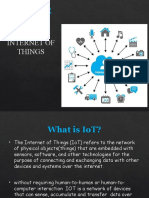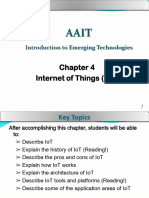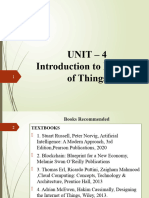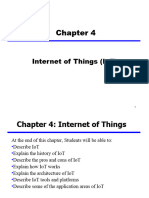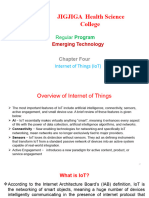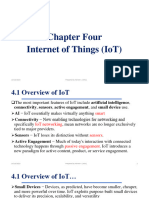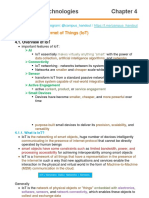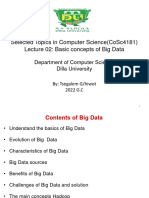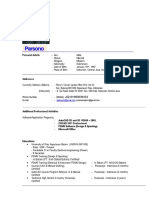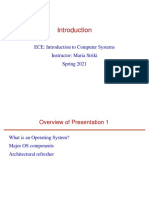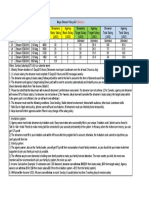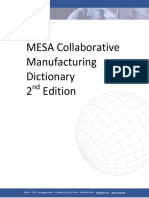0% found this document useful (0 votes)
69 views42 pagesLecture 03
The document provides an overview of the Internet of Things (IoT) as presented in a lecture. It defines IoT, describes its history and key components. The document outlines the architecture of IoT including the sensing, network, data processing and application layers. It also discusses advantages like improved customer engagement and disadvantages such as security and compatibility issues. Application areas are covered as well as how IoT works by having devices collect and share data to be analyzed.
Uploaded by
natnaelCopyright
© © All Rights Reserved
We take content rights seriously. If you suspect this is your content, claim it here.
Available Formats
Download as PDF, TXT or read online on Scribd
0% found this document useful (0 votes)
69 views42 pagesLecture 03
The document provides an overview of the Internet of Things (IoT) as presented in a lecture. It defines IoT, describes its history and key components. The document outlines the architecture of IoT including the sensing, network, data processing and application layers. It also discusses advantages like improved customer engagement and disadvantages such as security and compatibility issues. Application areas are covered as well as how IoT works by having devices collect and share data to be analyzed.
Uploaded by
natnaelCopyright
© © All Rights Reserved
We take content rights seriously. If you suspect this is your content, claim it here.
Available Formats
Download as PDF, TXT or read online on Scribd
/ 42

